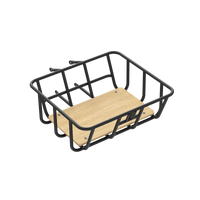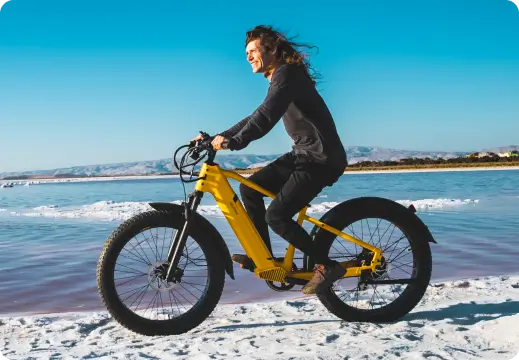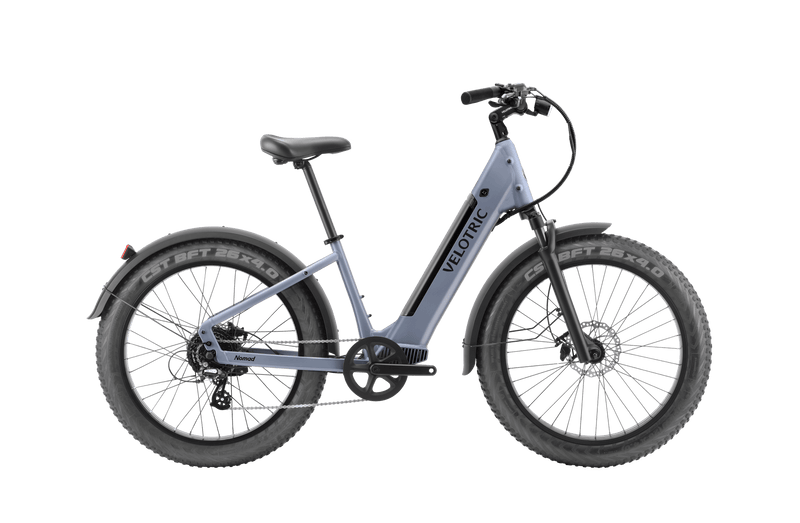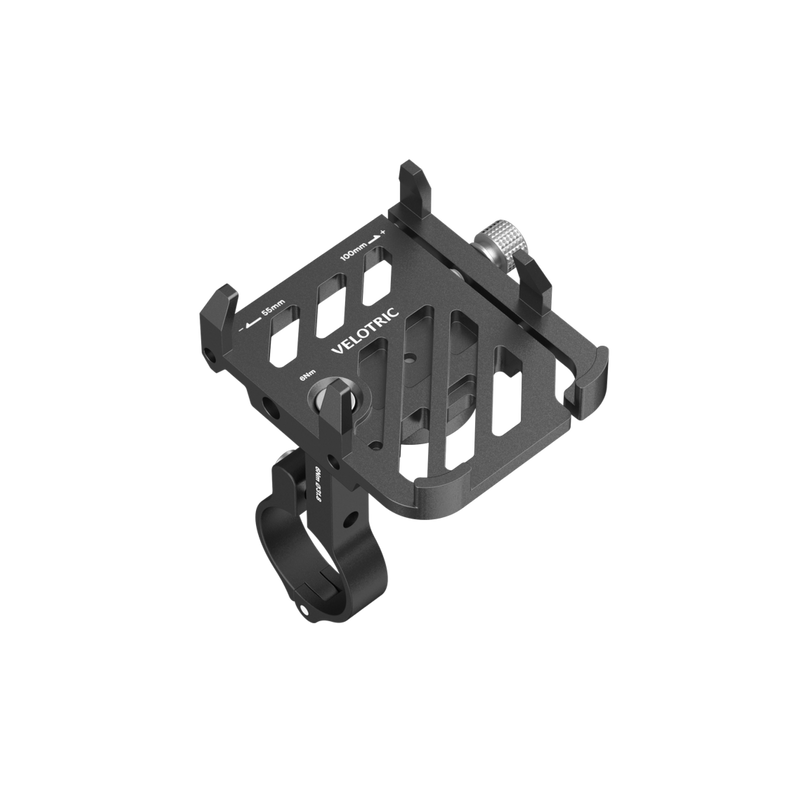A Guide to Bikepacking
Bikepacking combines the freedom of riding with the pleasure of wild camping. It’s a truly unique way to experience the great outdoors. A well-planned bikepacking adventure is a distinctive and fulfilling experience, regardless of whether or not you’re an experienced cyclist.
This guide provides research-backed information and tips for enjoying a successful bikepacking adventure, including advice about preparing for inclement weather, loading your bike optimally, packing appropriate equipment, and more. Read on to learn about bikepacking and discover tips and tricks for a fantastic ride.
What is bikepacking?
Bikepacking is a form of long-distance cycling where cyclists travel with all their gear on their bikes, combining elements of both cycling and backpacking. With its origins in mountain biking and bicycle touring, bikepacking has become a popular way to explore off-road terrain and backcountry trails. Electric bikes, such as fat tire, hunting, or mountain e-bikes, are especially useful for bikepacking trips.
Bikepacking vs. cycle touring
To best understand how bikepacking came to be, let’s briefly explore the history of bicycle touring and how the first cyclists enjoyed the sport.
History suggests the first cyclists enjoyed their commutes around 1820. Interest in bike touring peaked in 1869 when a small group of people cycled from London to Brighton in 15 hours and then from Liverpool to London in just three days. Interest in bicycle touring picked up steam over the next two decades. In 1896, John Foster Fraser and two of his friends made history when they completed the first worldwide bicycle tour; their expedition lasted over two years and spanned 19,237 miles and 18 countries.
Though the early days of cycling may seem a far cry from modern-day bikepacking, the spirit of adventure and exploration remains the same. Whether traveling around the world or exploring local dirt roads, cycling provides a unique way to experience the world around us.
Where to go bikepacking?
While you might not be ready to commit to a two-year worldwide tour, you can take a bikepacking adventure just about anywhere. Below are some of the most popular bikepacking routes in the U.S. to explore.
Bikepacking routes
If you’re looking for a bikepacking adventure on the shorter side, consider the Delmarva trail, Allegheny Mountains Loop, or Adirondack Park Loop. If you’re a seasoned bikepacker looking for something longer, you could try the Chicago to New York City trail, Bicycle Route 66, or the Atlantic Coast trail, each over 1,000 miles.
You can find trails suitable for almost any kind of bike, from road bikes to singletrack bikes to gravel bikes and more. Mountain bikes (MTB) and fat tire bikes are especially great for bikepacking adventures off the beaten path.
If you want to take on a longer trail, riding an electric bike can help you travel faster and farther with less physical exhaustion while still allowing you to enjoy the ride and feel of a manual bike. With the right bikepacking bags, bikes, and gear, you can embark on a bikepacking adventure of a lifetime, whether it’s a day trip or a long-distance bikepacking race.
Planning trips
Before embarking on your bikepacking trip, you’ll need to plan your routes, account for weather, and sort out your food, accommodations, and clothing needs well ahead of time. You’ll also want to brush up on the Seven Principles of Leave No Trace. These principles provide guidance for minimizing the impact of human activity on the environment. They also help you travel more confidently and comfortably.

What do I need to go bikepacking?
With the Seven Principles of Leave No Trace in mind, let’s look at what you’ll need to pack for a successful bikepacking trip. Remember that every trip is different and will call for unique preparation, so always research your route and the weather in advance.
Bags
There are several varieties of bikepacking bags you can attach to your ride to carry your necessities. You’ll want to attach each bikepacking bag carefully and thoroughly in its correct location to avoid interference with your bike’s performance.
Attach the seat pack behind your seat post and the frame bag directly below your frame, being careful that both sit clear of the wheel or wheel guard. Attach the top tube bag above your bike frame; this is a great spot to keep items you need to access quickly. Attach the handlebar bag between your handlebars and the stem bag in front of or right next to it. Lastly, put your water bottle in the bottle cage.

Camping equipment
Once your bikepacking gear is ready to load, the next piece of equipment to decide on will be your sleeping system. There are many options, including a lightweight tent, hammock, sleeping bag, sleeping pad, or any combination of these. Be aware of the weather and terrain along your bikepacking route and use them to inform your decision. If you plan on bringing a sleeping bag or pad along, you can use the graphic below to determine the best choices for you.
Note: When choosing a sleeping pad, the R-Value represents how well a pad will resist heat loss. Choose one with a higher R-Value for greater comfort in colder climates. When choosing a sleeping bag, the temperature rating signifies the lowest temperature at which the average sleeper will still be warm. The comfort rating on a bag denotes the lowest average temperature a cold sleeper will remain comfortable, and the lower limit rating is the same measurement but for warm sleepers.

Clothing
When checking off your packing list for your bikepacking trip, make sure to pack layers that you can add or remove as needed, and bring waterproof gear to keep you dry during unexpected downpours. Even if the forecast predicts good weather, it’s always better to prepare for the worst. That said, you’ll want to invest in ultralight, high-performance clothing so you don’t weigh down your bikepacking bags or panniers. Check the weather forecast regularly, pack accordingly, and enjoy your bikepacking adventure knowing you’re prepared for anything.
Food and hydration
To maintain stamina on your bikepacking bike, you’ll need to stay hydrated and consume enough calories. Aim for 2,500 to 4,500 calories per person per day, about 1.5 to 2.5 pounds per person per day. Consider your own size, weight, and exertion levels when deciding how much you need to eat. Pack calorie-rich and dehydrated foods to maximize your food intake, and bring items you know you’ll enjoy eating. Below are some recommendations for great foods to add to your dry bags.

Navigation
Navigation is an essential aspect of any bikepacking trip as bikepacking often involves traveling through remote and unfamiliar areas. Without proper navigation, it can be easy to take a wrong turn or miss a crucial turnoff, leaving you stranded in the middle of nowhere. A GPS unit is essential, and a power bank, solar charger, and paper map are great to have as backups on your bikepacking adventure.

Emergency items
Bikepacking is an adventure, and adventures are often unpredictable. As such, it’s important to include first-aid kit essentials in your pannier bags. While emergencies are unlikely, bringing essentials like dressings, bandages, tape, and ointments can make or break your bikepacking trip.

You’ll also want to pack a repair kit for your bikepacking bike, especially when traveling on gravel roads or off the beaten path. A cyclist’s bike repair kit typically includes tools and spare parts such as tire levers, a bike pump, patch kits, a multi-tool, and spare inner tubes. With these items, you can adjust your brakes or gears, tighten loose bolts or screws, and fix common issues such as a flat tire.

Packing tips
You’ll want to strategize item placement on your bikepacking bike when packing. Heavy items, like your tent, clothes, and rain gear, should be placed low, toward the bike’s center, not on the rear rack. Your seat bag can also contain heavy items like your sleeping bag and pad. Use the top tube bag and stem bag for daily items requiring easy access.

Enjoy Your Next Adventure
Bikepacking is a thrilling and adventurous way to explore the great outdoors, combining the freedom of cycling with the exploration of backpacking. From Maine to Arizona, there are amazing bikepacking routes all over the country, and you can customize your bikepacking adventures to suit your riding level and schedule. Just remember to pack carefully and select the proper clothes, camping equipment, food, navigation tools, and emergency items. With the right equipment and mindset, bikepacking can be a life-changing experience you’ll remember forever. So grab your bike and enjoy the ride!
Methodology
The following pages were consulted in the creation of this guide: Adventure Cycling Route Network, The 7 Principles - Leave No Trace Center for Outdoor Ethics, Complete Guide to Bikepacking Bags, How to Choose the Best Backpacking Sleeping Bag | REI Co-op, Backpacking Food Ideas & Meal Planning | REI Co-op, Bikepacking - Everything I Learned Over 18 Months From Alaska To Panama, Make a First Aid Kit | Supplies & Contents | American Red Cross, and How to Pack for Bikepacking | REI Co-op.
About Velotric
Velotric designs high-end, high-performance e-bikes so you can comfortably and safely ride in style.
Fair use statement
If you’ve enjoyed this bikepacking guide, feel free to share it with anyone who’s planning their own bikepacking expedition. We just ask that you do so for noncommercial purposes only and provide them with a link back to this page so the contributors can earn credit for their work.







































